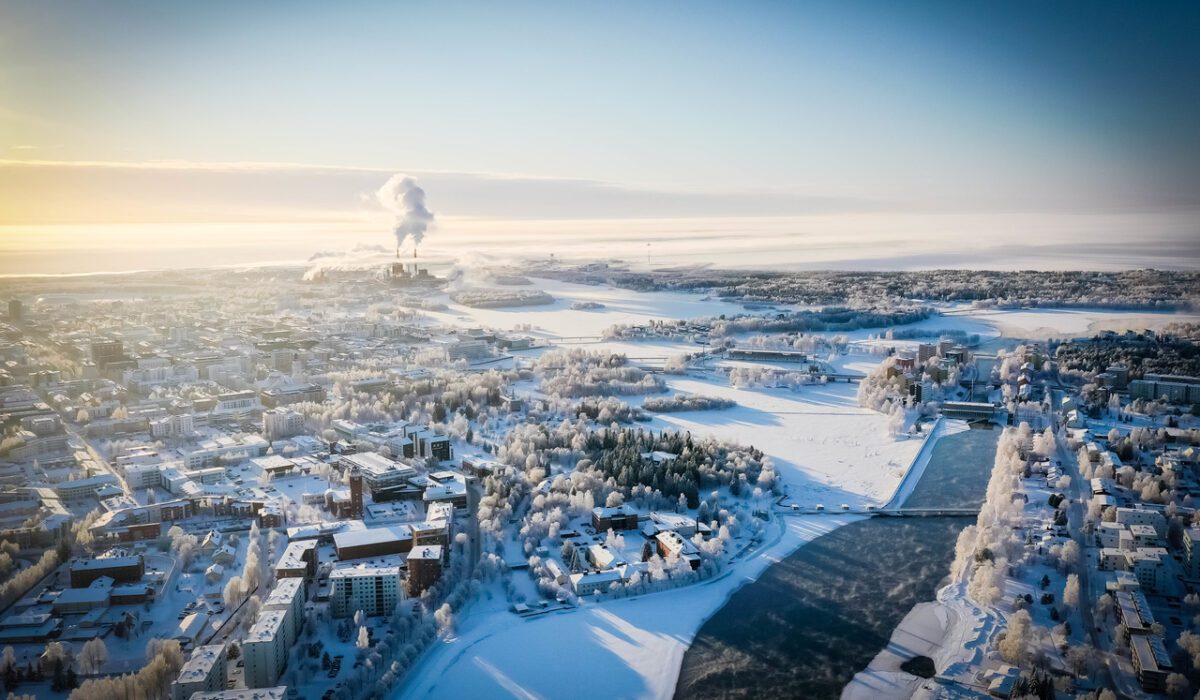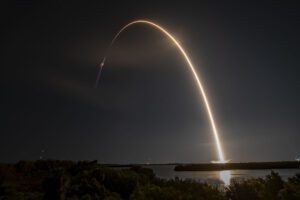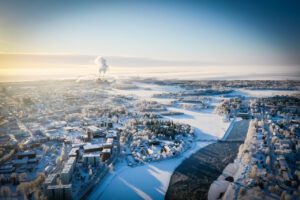
Where are all the Arctic Unicorns?
Unicorns are the ultimate fantasy creatures, mystical and ineffable; they often hold properties coveted for their magical and economic value. Combined with the perception of a remote and untouched landscape in the north, what could be rarer than an Arctic Unicorn? However, perceptions of a unicorn’s existence, and that of the Arctic region, are often obscured by presumptive ideas.
In the world of business, a ‘unicorn’ is defined as a non-public company with a valuation of $1 billion accumulated through private funding. The term first arose in 2013 in reference to the scarcity of companies which fit the criteria, specifically regarding tech start-ups. As of January 2023, there are 1,438 on the unicorn list with an estimated valuation of $4.9 trillion. However, from the list, only a couple of companies hold headquarters and operations in the outer reaches of the Arctic region.
Despite assumptions of a barren and desolate landscape, the Arctic is a vibrant region of people and opportunity governed by some of the world’s largest economies. The area is rich in resources, both in the form of raw materials and innovative ideas. To fully utilize its economic potential, in a locally beneficial and sustainable manner, the Arctic is calling out for people, investment, and infrastructure.
North American Arctic
North America dominates the unicorn list with multiple companies meeting and then exceeding the required valuation benchmark. However, all these companies are based outside of Alaska. In the USA, headquarters are often found in the mountains of Colorado, bustling cities of New York and Seattle, and the tech heaven of Silicon Valley. Regardless, these companies are still making an impact in the Arctic region. The most prominent of which is perhaps Space X, whose Starlink satellite system endeavours to improve connectivity and communication access worldwide. This is particularly relevant for the remotest regions of the North American Arctic, as a reliable network of communication lies at the heart of infrastructure for innovation and development. Issues with connectivity encourage movement to the south in pursuit of relevant resources and structure. This is clear also in Canada, where innovation hubs and unicorn company HQs are centred around the cities of Vancouver and Toronto. Whilst Starlink brings crucial technology to the Arctic it is important that it comes in a sustainable and affordable way which benefits local economies.

The North American Arctic, including Greenland, is widely regarded as being rich in natural resources and economic potential. This is where some perceptions come into conflict. In the case where the Arctic is viewed as a barren and isolated land, the discovery of such resources promotes the cultivation of a remote region by extractive industries. However, the Arctic has so much more to offer, and benefit from in turn.
Therefore, there must be more focus on the strategy of investment, to improve infrastructure and attract more business and innovation to the area which promotes local development. The Arctic Investment Protocol (AIP) is mechanism which can help to develop this kind of strategy. AIP offers clear principles to guide the investors in their decision-making process towards responsible and sustainable business practices.
A key example of a non-unicorn, but Arctic rejuvenation, could be the town of Berlevåg, Norway where recent investment in renewable energy production has revitalized the town and its population by providing employment, local capital, and cheap green electricity. The Arctic is bursting with resources in the form of not only raw materials, but also regional knowledge, and talented people. It will require nurturing of all three to properly utilize the Arctic to benefit both local and global sustainability.
European Arctic
To the other side of the pole, the European Arctic faces a similar issue of company focus to the south, as the Nordic unicorns have based themselves around non-Arctic industrial and capital regions. For example, Copenhagen acts a hub for financial unicorns in the form of Pleo, Lunar, and Saxo Bank, whilst Helsinki attracts technological talents through the work of HMD, Avian and Relex Solutions.
However, not all is lost.
Finland

The first near Arctic unicorn can be found in the Finnish city of Oulu, skirting just outside the Arctic region. The company Oura was founded in 2013 with the creation of the Oura health ring, which tracks heart rate and sleeping patterns to promote a healthier lifestyle. Despite holding offices in both Helsinki and San Francisco, Oura’s headquarters remain in Northern Finland. The city of Oulu is fast becoming a hub of technological innovation and is a good example of collaboration and research, guided by organisations such as Business Oulu.
Sweden

Into Northern Sweden we find Northvolt, another near Arctic unicorn operating in the city of Skellefteå. Northvolt is ‘in the battery business’ working with renewable energy and recycling programmes to produce batteries with a minimal carbon footprint. In Skellefteå, Northvolt Ett sits as Europe’s first homegrown gigafactory producing battery cells, working exclusively off renewable energy, and providing employment for up to 10% of the local population. Northvolt is poised for further development and expansion within a model of sustainability providing local opportunities alongside global engagement. In 2021 Northvolt entered a long-term partnership with another Swedish unicorn, Polarium. Northvolt will provide lithium-ion batteries for Polarium’s energy storage for telecom networks, an industry typically powered by diesel generators and short-lived lead-acid batteries. The partnership acts as another example of innovation and collaboration rooted in the North.
Norway
Whilst the rest of our Nordic unicorns are found to the south, the European Arctic is not without innovation. In Northern Norway, multiple new companies are taking innovative ways to utilize regional resources and renewable energy to create sustainable products and business models. However, these companies are unable to fit the criteria of a unicorn either due to size of investment or public trading. An advantage often attributed to the unicorn label is the persistence of significant private funding. As a non-public company, the unicorn arguably retains more control with the core components. In the case of the Arctic this can mean that decisions and profits can stay local through community investment schemes and networks.
Iceland

Across to Iceland, there is some promise on the emerging Unicorns list, in the form of Kerecis. An emerging Unicorn is recognised as a company holding a valuation of at least $500 million but less than $1 billion and on track to full unicorn status. Kerecis is an Icelandic company from fishing town of Ísafjörður with offices in Reykjavik, as well as the United States and Germany. Their innovative technology utilizes waste fish skins from sustainable fishing stocks to create soft tissue regeneration products. These products are produced in sheets to treat burns and venous wounds, as well as for surgical closures. Kerecis’s manufacturing of the omega 3 rich products uses exclusively renewable sources of energy and marks them as an Arctic pioneer in using local resources and investment to create a globally beneficial and sustainable product.
Sustainable investment opportunities in the Arctic

AEC has made a selected list of sustainable investment opportunities in the Arctic. It includes business cases of large companies as well as SMEs from different economic sectors such as mining, energy, tourism, bioeconomy, technology, and infrastructure. All the featured companies stand for the Arctic solutions to our globe’s major challenges. The region holds a sustainable blue economy which can be developed to help feed a growing world population. The Arctic can also provide all kinds of energy sources from oil and gas to geothermal, hydro, wind and solar, and now hydrogen. Finally, the ancient old rocks in the region hold some of the raw materials we need in the green transition to power cleaner technologies.
People, investments and infrastructure
The population of arctic unicorns is due for a boom. Innovative and sustainable technologies are popping up everywhere but to make the most of these great opportunities the Arctic is yet again calling out for three things, people, investment, and infrastructure. The three key elements come hand in hand, investment invites infrastructure to support industry and vice versa, which in turn attracts people to an area which supports a good quality of life and wellbeing. However, there are clear obstacles facing regional development. For example, in 2022, a water crisis descended upon Iqaluit in Nunavut, Canada, when an old fuel tanker poisoned the local water supply.
The current water network is aging and unable to support any new and significant developments. Combined with a long-term housing crisis, Nunavut requires stable investment to educate and maintain local talent amongst the Indigenous communities whilst promoting people-based development.
A key obstacle facing investment in the Arctic is the disparity in understanding between investor and local needs. To receive local support, there must be an effective dialogue between the stakeholders on one side, and a responsible investment strategy on the other. The principles of the Arctic Investment Protocol are designed to bridge that gap and promote sustainable rhetoric.

For centuries, people have followed industries and the employment provide. In 2021, the Kvarnsveden paper mill in central Sweden closed its doors after 120 years of operation following a reduction in the European paper market and affecting a workforce of 440 people. However, in 2022 the production site was bought over by Northvolt with the intention to reuse the old buildings in the creation of a new battery factory and the opening of up to 1000 jobs. The closing of older industries does not have to negatively impact the surrounding population if new investors are prepared to step in and make use of existing sites. This also benefits established communities by supporting the local economy and attracting new workers to the area.
The obstacles facing unicorn sightings in the Arctic can be overcome by more investments into the universities and R&D. However, there must be also a clear communication between local and international actors to ensure effective and sustainable development. The sighting of a unicorn indicates the presence of sufficient infrastructure, investment and people required to support a start-up from establishment up to a $1 billion valuation. As development in the Arctic continues these sightings should hopefully become common place.
Written by: Rachel Maguire